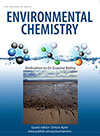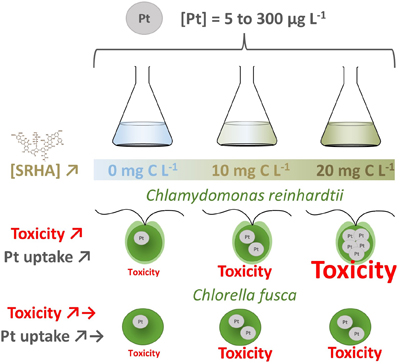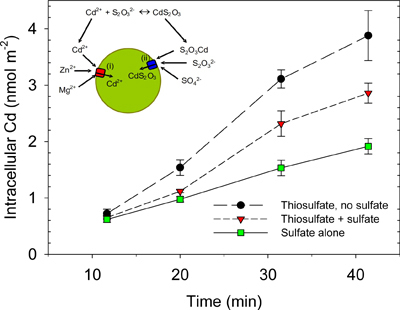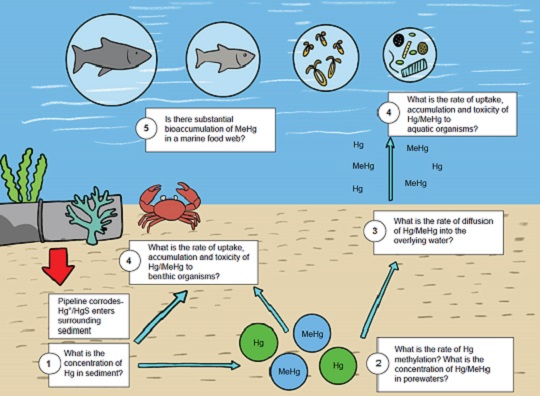Simon C. Apte (CSIRO Land and Water)
This special issue is a tribute to Graeme Batley’s career and his many contributions to the field of environmental chemistry.

Environmental Chemistry
Volume 19 Numbers 3 & 4 2022
Special IssueSpecial Issue Dedicated to Dr Graeme Batley
 , Elaheh Lotfi Kalahroodi, Isabelle A. M. Worms, Zoyne Pedrero, David Amouroux and Vera I. Slaveykova
, Elaheh Lotfi Kalahroodi, Isabelle A. M. Worms, Zoyne Pedrero, David Amouroux and Vera I. Slaveykova 
Environmental context. Understanding mercury transformations in the aquatic environment is of utmost importance for the improvement of mercury biogeochemical modelling and sound environmental risk assessment. In such a context, we discuss critically the advancement in the knowledge on the role of the phytoplankton (algae and cyanobacteria) in mercury cycling and transformations in the aquatic environment. Important research advances revealed that different microalgal species and cyanobacteria contribute to biotic reduction of inorganic mercury to elemental mercury, to demethylation of methylmercury and transformation of inorganic mercury into metacinnabar and to the production of different biomolecules which can contribute to abiotic mercury reduction.
Environmental context. High-quality ecotoxicology data are required to derive reliable water quality guideline values that ensure long-term protection of marine biota from arsenate. Tropical and temperate marine biota have sensitivity to arsenate covering three to four orders of magnitude due to the range of arsenate detoxification mechanisms used to reduce toxicity. The water quality guideline values derived in this study will contribute to robust risk assessments of arsenate in marine environments.
EN22039 Abstract | EN22039 Full Text | EN22039PDF (1.8 MB) | EN22039Supplementary Material (450 KB) Open Access Article
 , Graeme E. Batley
, Graeme E. Batley  , Frank Krikowa, Michael J. Ellwood
, Frank Krikowa, Michael J. Ellwood  , Jaimie Potts, Rebecca Swanson and Peter Scanes
, Jaimie Potts, Rebecca Swanson and Peter Scanes
Environmental context. Knowledge of the fate of selenium in estuaries receiving inputs from coal-fired power stations is essential as these environments are important nursery habitats for marine life and selenium has been shown to cause fish and bird mortality and sublethal effects including oedema, chromosomal aberrations and reproductive success. Understanding selenium cycling allows risk assessment to be undertaken and appropriate action to protect resident organisms.
EN22032 Abstract | EN22032 Full Text | EN22032PDF (1.6 MB) Open Access Article

Environmental context. The growth in demand for platinum has led to an increase in the presence of this metal in the environment but little is known about its toxicity to aquatic organisms. The presence of organic matter should contribute to decreasing metal bioavailability but the opposite was found for platinum. How ubiquitous natural organic matter can alter the accumulation and effects of platinum group elements remains to be fully elucidated.


Environmental context. Reverse osmosis (RO) is widely used for the treatment of hazardous wastewaters produced from the coal chemical industry (CCI) to achieve zero liquid discharge however the use of RO inevitably results in accumulation of refractory organic matter in the RO membrane concentrate, the treatment of which is challenging. This work provides useful insights into the organic composition of RO concentrates obtained from a range of real CCI wastewaters. The efficacy of treatment of these concentrates by ozonation processes is assessed as is the cost effectiveness of such treatment.
EN22042 Abstract | EN22042 Full Text | EN22042PDF (1.7 MB) | EN22042Supplementary Material (985 KB) Open Access Article

Environmental context. Thiosulfate is present in natural waters, especially those influenced by sulfide oxidation, and it has a marked affinity for metals such as cadmium. Normally the binding of cadmium by thiosulfate would be expected to reduce the metal’s bioavailability. However, here we demonstrate that algal uptake of cadmium is enhanced in the presence of thiosulfate, indicating that Cd can enter the alga via a novel route as an intact Cd-thiosulfate complex.
 , Jenny L. Stauber, Sarah Stone, Darren J. Koppel, Aleicia Holland and Dianne Jolley
, Jenny L. Stauber, Sarah Stone, Darren J. Koppel, Aleicia Holland and Dianne Jolley
Environmental context. Having appropriate and robust models used for developing water quality guidelines is critical for sound environmental management. Methods used to validate models have only been demonstrated appropriate for a small portion of data types used in these models. This study has found that models using certain data types would be more appropriately validated using alternative evaluation criteria. This study serves as an important reference for developing and evaluating robust models.
EN22050 Abstract | EN22050 Full Text | EN22050PDF (1 MB) | EN22050Supplementary Material (562 KB) Open Access Article
Environmental context. Arsenic is a globally distributed element, occurring in various chemical forms with toxicities ranging from harmless to highly toxic. We conducted 48-h cell culture experiments under batch and continuous conditions using the ubiquitous marine unicellular alga Dunaliella tertiolecta and evaluated the alga’s arsenic metabolome over time. We found that the alga first methylates the inorganic As taken up from the surrounding water, and then further metabolises the intermediate simultaneously into more complex organo-arsenic molecules like sugars and lipids. These time series experiments are valuable pieces in the puzzle of how algae bio-metabolise arsenic, and in our understanding of the global arsenic cycle.
Environmental context. The use of assessment factors applied to guideline values derived using species sensitivity distributions adds an unnecessary level of conservatism. Using an adequate toxicity dataset and applying the latest model-averaging software will yield values of greatest reliability.
 , Darren Koppel
, Darren Koppel  , Alexandra Boyd, Fenny Kho
, Alexandra Boyd, Fenny Kho  , Rebecca von Hellfeld
, Rebecca von Hellfeld  , Stuart Higgins, Simon Apte and Tom Cresswell
, Stuart Higgins, Simon Apte and Tom Cresswell 

Environmental context. The oil and gas industry has a significant liability in decommissioning offshore infrastructure. Following decommissioning, subsea pipelines could be left on the seabed to provide artificial reefs. Mercury is a contaminant of concern which could remain within pipelines. There are gaps in our knowledge on how mercury moves through the marine environment. We review the current science and identify future research needs to understand potential impacts from mercury in subsea pipelines which will better inform decommissioning activities globally.
EN22048 Abstract | EN22048 Full Text | EN22048PDF (1.4 MB) | EN22048Supplementary Material (7 KB) Open Access Article
Environmental context. Excessive amounts of retinoic acids (RAs), the main derivatives of vitamin A, cause developmental abnormalities in animals, yet information on their fate in the marine environment is limited. This study investigated the degradation of all-trans-RA in seawater and found that over 90% was degraded and transformed in unfiltered natural seawater within 24 h. The results provide essential insights on the fate and risks of RAs in marine environments.

Environmental context. Base Mine Lake (BML) is a demonstration pilot pit lake for long term oil sands tailings reclamation in Alberta, Canada. This study quantified BML water cap sulfur mass balance and speciation to help understand potential risks to oxygen levels during its early-stage development. Results provide important insights for the adaptive management of water-capped oil sands tailings reclamation.
Environmental context. In previous instances of global impacts from chemicals, there were significant gaps between the onset of use and observations that triggered management. The lessons of the past have informed the development of strong paradigms for chemical management, but at some point, major impacts will again emerge, not covered by these paradigms. Holistic observation of the environment and collaborative reporting are needed to identify signals of future major issues.
EN22046 Abstract | EN22046 Full Text | EN22046PDF (1018 KB) Open Access Article
Environmental context. Monitoring uranium concentrations and speciation in aquatic systems is important for pollution control and for environmental studies. Although an in situ speciation technique based on diffusion and uptake of uranium has been developed, known as DGT, there were uncertainties over some parameters affecting the accuracy of the measurements. This study resolved those uncertainties by investigating diffusion and binding properties of uranium in DGT and provided confidence in monitoring uranium in the environment.